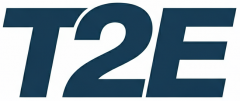Technology is rapidly evolving, reshaping the way businesses function. To remain competitive in today’s fast-paced world, organizations must increasingly depend on innovative technology. This reliance underscores the importance of a clear, well-crafted technology strategy—an essential foundation for any business striving to thrive and succeed.
A technology strategy is essentially a roadmap that defines how an organization leverages technology to achieve its goals and objectives. Typically crafted and overseen by a tech exec, such as the CIO, it involves assessing the organization’s current technological landscape, identifying opportunities for improvement, setting clear objectives, and executing initiatives that align seamlessly with the company’s overarching vision.
Why a Technology Strategy is Essential
So, having a clear and well-defined technology strategy is essential for organizations for several key reasons:
- Provides direction and focus: A technology strategy aligns tech initiatives with organizational goals, focusing resources on achieving specific outcomes.
- Enables efficient decision-making: By grasping the organization’s current technology status, leaders can decide resource allocation and project priorities more effectively.
- Improves agility and adaptability: Technology evolves constantly, and a clear strategy helps organizations stay agile in responding to industry or market shifts, while also readying them for future technological advancements.
- Mitigates risk: Implementing technology without a strategy can result in wasted resources, failed projects, and security vulnerabilities. A clear technology strategy helps mitigate risks by identifying and addressing potential issues.
- Enhances customer experience: In today’s digital world, a strong online presence and effective technology use can boost customer experience. A tech strategy helps organizations understand customer needs and customize offerings.
Developing a Technology Strategy
Technology Strategy Framework – Overall View
Developing a technology strategy requires seamless collaboration across key departments such as IT, finance, marketing, and operations. Guided by the lead tech executive, this strategy is crafted as a collaborative blueprint that aligns organizational needs with business objectives, ensuring a unified and purpose-driven approach.
Explore the links below for detailed examples and descriptions of the technology strategy development process. Follow these steps to help guide the journey:
- Project setup and PMO: In today’s fast-paced business environment, effective project management is crucial to achieving success. With projects growing in complexity and scope, the need for a well-structured Project Management Office (PMO) has never been greater. Developing a technology strategy should be approached as a project in its own right, given its cross-organizational involvement. To ensure alignment and efficiency, this strategy should be managed as a priority initiative, driven through the PMO for optimal execution.
- Assess current technology landscape: The initial step is to thoroughly understand the organization’s current tech infrastructure, systems, and processes to pinpoint and address any gaps or inefficiencies.
- Define goals and objectives: Identify the organization’s goals and how technology can support them, considering customer needs, market trends, and competition.
- Prioritize initiatives: Prioritize technology initiatives that align with goals. Factor in resources, budget, and timeline for maximum impact.
- Develop a roadmap: Develop a roadmap detailing steps for implementing prioritized initiatives, including timelines, milestones, and KPIs to gauge success.
- Allocate resources: Identify the financial and human resources required to implement the tech strategy. This might mean reallocating current resources or obtaining new ones.
- Communicate the Strategy: The tech executive spearheading the strategy development must communicate the technology strategy effectively across the organization to secure stakeholder buy-in. Craft a well-structured email emphasizing the importance of unified support and alignment to achieve success. Start by underscoring the critical need for everyone to be aligned on the strategy. Clearly articulate the goals, expected outcomes, and the value this strategy brings to the organization.
- Implement and monitor: After setting the technology strategy, implementing planned initiatives and regularly tracking progress against KPIs is vital. This helps identify issues, tackle roadblocks, and make necessary adjustments.
- Continuously review and update: Technology evolves continuously, necessitating regular review and updating of the tech strategy to align with the organization’s goals.
Additional Considerations Building a Technology Strategy:
- Collaboration between departments: To develop an effective technology strategy, departments across an organization must collaborate, ensuring all goals are considered and aligned toward a shared objective.
- Flexibility: Having a detailed plan is essential but so is staying adaptable. As technology continues to evolve, strategies must be flexible enough to adjust to new advancements and emerging challenges.
- Training and support: Provide employees with training and support when implementing new technologies. This ensures they can use the tools effectively and fosters smooth, successful adoption across the organization.
- Data security: As technology becomes increasingly embedded in business operations, prioritizing data security is essential. Implement robust measures to protect sensitive information and ensure compliance with privacy regulations, making data protection a core element of your tech strategy.
- Budget and resource allocation: Developing a technology strategy can be costly, making it essential to allocate resources thoughtfully. To ensure success, organizations must set a budget aligned with their objectives and priorities.
- Regular communication: Effective communication lies at the heart of a successful technology strategy. Engaging stakeholders and maintaining transparency throughout every stage—from planning to execution—is essential for building support. This means clearly articulating goals, setting realistic timelines, and addressing potential challenges proactively.
- Risk management: Every technology strategy carries potential risks, making it essential for organizations to implement a robust risk management plan. Such a plan should proactively identify and address potential challenges, ensuring smoother operations. This includes consistently monitoring systems to detect and resolve issues before they escalate.
In conclusion, organizations must craft a forward-thinking tech strategy to remain competitive and drive future success.
Successful technology adoption requires thoughtful planning, adaptability, and attention to key factors such as training, data security, and budget. Clear and effective communication plays a pivotal role in ensuring a smooth transition. By regularly assessing and refining their strategy, organizations can excel in today’s tech-driven world. Prioritizing a robust technology strategy is essential for growth in the digital age. With the right approach, businesses can harness the power of technology to drive innovation and achieve lasting success.
If you would like more details or have specific questions, please let me know.

